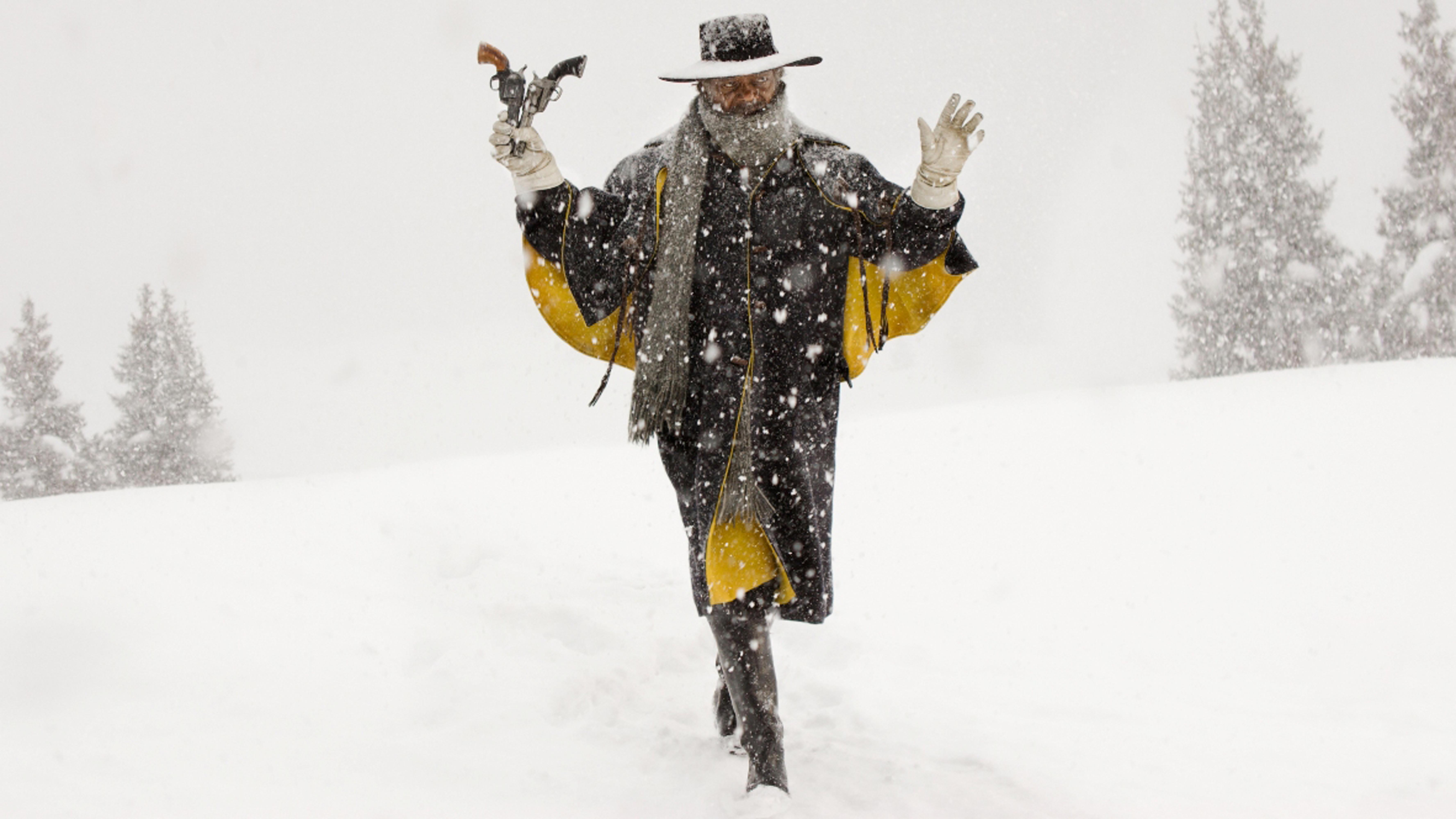Early on in The Hateful Eight, Quentin Tarantino’s eighth film (or ninth if you count Death Proof, and you probably should), the song “Apple Blossom” by The White Stripes plays. Just the same as when Rick Ross’s “100 Black Coffins” was used in Django Unchained, it’s a confidently anachronistic move—particularly in this latest feature, which has been presented as a love letter to the enduring legacy of classic- and Spaghetti-era Westerns. And that’s pretty much Tarantino in a gun-shell for you: a man at the center of a cinematic universe that’s covered with the fingerprints of others, and yet someone who is able to write his name on every frame that he produces.
It’s a nifty trick, but a precarious approach. And as time has gone on, it’s become increasingly difficult to believe that Tarantino can continue to do this dance (a twist, no?) without stumbling. Indeed, in my mind, Django, despite its many merits, was a minor stumble, and functioned as his weakest film—relatively speaking—to date. The Hateful Eight, on the other hand, is no stumble. It’s a goddamn pirouette.
https://www.youtube.com/watch?v=gnRbXn4-Yis
Shot on Ultra Panavision 70 and predominantly taking place in one large room (Minnie’s Haberdashery—a Reconstruction-era Wyoming lodge where our eight principal characters have all stopped to wait out a blizzard), the movie is for the most part phrased like a play, with incredibly dense and highly important staging throughout. And plot-wise, it slightly resembles a Hercule Poirot story, but it’s less of a “who-dun-it?” than a “who-dun-what?”
All this means that the extended field-of-view afforded by the hyper-widened film stock is incredibly valuable in adding to the intimacy of the experience (and with the roadshow cut running over three hours, you better believe that it’s intimate). Suspicious of one character in particular? Good. Thanks to the patient madness of Robert Richardson (Tarantino’s primary cinematographer since Kill Bill: Vol. 1), you can keep track of how that character acts in the background of nearly every scene.
Just the same as Jack White, Tarantino owes his successes to not only being honest about his influences, but to being proud of them.
Given this setup and approach, the casting in Hateful Eight was arguably the most important of Tarantino’s career (and by no coincidence, the process was not without its controversies). Delivering predictably excellent performances, Samuel L. Jackson and Kurt Russell (both playing bounty hunters) are the closest thing that this movie has to leads, but it’s Jennifer Jason Leigh (the bounty) and Walton Goggins (the self-proclaimed sheriff) who steal the show, commanding your gaze whether they are center-frame or not. The rest of the lodge ensemble is mainly rounded out by Tim “He-Should-Work-More” Roth (doing a campy take on his own English accent), Demián Bichir (doing a campy take on his own Mexican accent), and Bruce Dern (doing a campy take on his own crotchety-old-man accent). Michael Madsen doesn’t have an accent, possibly because he isn’t capable of playing anyone but himself.
Whether you know them from a Sergio Leone movie, or just from a random episode of Bonanza, all the characters feel familiar. But it’s not just the characters. It’s the plot points, the themes, and—most of all—the structures that feel familiar, if not almost lifted from other works. While this is initially a problem, at a certain point you realize that you don’t actually know these people, that you haven’t seen this movie. Maybe you’ve seen an epic with an overture before, but never anything like the terrifying Ennio Morricone score that starts the movie off. Maybe you’ve seen a Western that’s basically a mystery novel with stirrups, but never one that completely lacks any moral compass whatsoever. And maybe you’ve seen a Tarantino movie where guns go off, but never like this.
Just the same as Jack White—whose “Apple Blossom” melody will linger in your head for days alongside this movie—Tarantino owes his successes to not only being honest about his influences, but to being proud of them. And in that regard, it’s helpful to think of the overarching universe of his eight (or nine) films as being backlit by the cinematic constellations that he grew up gazing at. Don’t miss your chance to take this one in as it happens. Once the blizzard passes, The Hateful Eight is destined to become a star shining most bright—and blood red. FL







